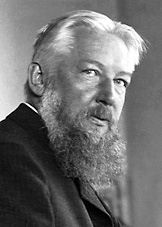


In his 1893 textbook about chemical energy, see Links,
Wilhelm Ostwald divided the forms of energy into five groups:
1. mechanical energy,
2. heat,
3. electrical and magnetic energy,
4. chemical and internal energy,
5. radiating energy.
In doing so, he defined chemical energy and placed it alongside other forms of energy. Chemical energy, or reaction heat, is the energy released by rearranging atoms and molecules during a chemical reaction (combustion, for example). It is the energy associated with the chemical bonds of molecules. If the reaction takes place under constant pressure, it corresponds to the reaction enthalpy or heat of reaction (or heat of combustion if it is a combustion reaction).
In order to measure the heat of combustion, a material is burned in excess oxygen. Heats of combustion are usually converted to a condition of 0 °C and reported as Hs or to 25 °C and reported as the standard heat of combustion ΔcH°. These are based on the combustion products being gaseous carbon dioxide and water, even though water would actually condense to a liquid at these temperatures. The Hs is sometimes referred to as the higher heating value (the s is from the Latin superior). On the other hand, the (true) lower heating value Hi (Latin inferior) is based on a combustion process where all products are gaseous, i.e. any water formed is treated as a vapor. The calculation of the lower heating value is thus determined by subtracting the heat of vaporization of the water formed from the higher heating value. Therefore, the true heating value of technical fuels is at about 10% lower than the standard heat of combustion (for graphite 0% and for turf 35%).
Modern boilers are designed to achieve condensation of the exhaust fumes to avoid the heat loss associated with vaporizing the water.
In MJ/kg, the heating values of some typical fuels are 142 for hydrogen, 47 for gasoline, 45 for diesel, 19 for wood pellets, and 17 for dry crop straw.